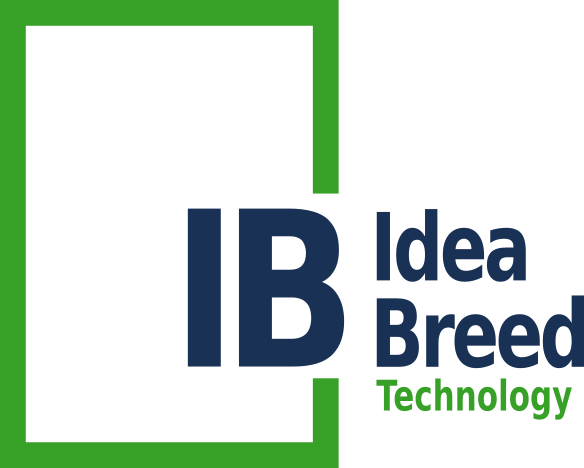OmniAuth For Rails Application
Introduction
OmniAuth(Outh) is a standard protocol for authorising the website to use the user information of the particular social sites as facebook, google, github, etc without providing the actual password of the user to the application. For e.g when visiting the login page of certain application, there may be the option available as “Sign in with Facebook” or any other social sites. When a user clicks that option, the user is redirected to that social site where the user provides the login credentials. Afterward, the user gets redirected back to the index page of the previous app. This way the user avoided the necessity to fill up the long signup process.
How the process flows ?
First of all, an application is registered with the intended provider (Facebook, Google, etc) where
client _ idandclient _ secretare obtained which gets configured in the application configuration file.Then, the application sends out a request to the provider(Facebook, Google) which includes the application’s client _ id and client _ secret.
Provider asks the user if they’d like to authorize the application to use their info.
Then, a provider sends back token to the application. The application sends a second request to the provider along with the token.
The provider sends a response back with a user’s information which the application parses in hash form whch the application can understand.
OmniAuth with Facebook
In facebook developer site, create an app by clicking on to Add a New App
Then, provide the necessary credentials. In Add a product section
click on Facebook Login and then enter https://localhost:3000/
in Site URL options. After this, in the valid OAuth redirect URIs field,
enter https://localhost:3000/auth/facebook/callback, which
is the default callback endpoint for the omniauth-facebook.
Click Save Changes, and then on Dashboard option in the sidebar click
on Settings and then Basic where you need to copy the APP ID and App Secret.
Add a gem file
1
gem 'omniauth-facebook'
Add a required additional field to users table
1
rails g migration AddColumnsToUsers provider:string, uid:string
where, the provider is the type of OAuth , and uid specifies the unique Id
of the user.Then, run rails db:migrate
Add OmniAuth Configuration to initializer
In config/initializers/devise.rb add:
1
config.omniauth :facebook, ENV['FACEBOOK_KEY'],ENV['FACEBOOK_SECRET']
FACEBOOK _ KEY and FACEBOOK _ SECRET are obtained from the previous time
of creating app in facebook.
Enable a Route for Omniauth
In config/routes.rb configure to create a router for Omniauth to send its authentication
data to :
1
devise_for :users, :controllers => {:omniauth_callback => "users/omniauth_callbacks"}
Enable Omniauth for User Model
In user.rb add the following :
ruby
devise :omniauthable, :omniauth_providers => [:facebook]
And add, the from_omniauth method
1
2
3
4
5
6
7
8
9
devise :omniauthable, :omniauth_providers => [:facebook]
def self.from_omniautha(auth)
where(provider: auth.provider, uid: auth.uid).first_or_create do |user|
user.email = auth.info.email
user.password = Devise.friendly_token[0,20]
end
end
Add a Controller to Handle the Callback
In app/controllers/users/omniauthable_callbacks_controller.rb , write
the code to handle the Omniauth Callback
1
2
3
4
5
6
class Users::OmniauthCallbacksController < Devise::OmniauthCallBacksController
def facebook
@user = User.from_omniauth(request.env["omniauth.auth"])
sign_in_and_redirect @user
end
end
Now, the application is ready to sign in using the facebook credentials.
OmniAuth with Google
Similar to the facebook-oauth, we need to register our app in the google developer account https://console.developers.google.com.
However, application must be hosted on authorized domain such as https://mustang.ideabreed.net/.
The process may feels to be difficult in comparison to the process of registering app in facebook.
Guide to register app in the google and configuration of the omniauth-google-oauth2
- Go to the link https://console.developers.google.com.Complete the login process, you will be redirect to dashboard.
- In the sidebar, click to credentials options after that a dropdown menu named ‘create credentials’ appears where you need to select OAuth client ID
- Go to the dashboard page again where you need to provide the necessary credentials including the link of your app hosted in authorized domain.
- Then you will be provided the
app _ id,app _ secretwhich you need to later configure inconfig/initializers/devise.rbonce you install theomniauth-google_oauthgem - As in
oauth-facebook, addgem 'omniauth-google-oauth2'in gemfile, then run bundle.
Add OmniAuth Configuration to initializer
In config/initializers/devise.rb :
1
config.omniauth :google_oauth2, ENV['APP_KEY'],ENV['APP_SECRET']
Enable Omniauth for User Model
In user.rb add the following :
1
devise :omniauthable, :omniauth_providers => [:facebook, :google_oauth2]
And add, the required field to create from obtained data from the google-provider in from_omniauth method.
1
2
3
4
5
6
7
8
devise :omniauthable, :omniauth_providers => [:facebook, :google_oauth2]
def self.from_omniautha(auth)
where(provider: auth.provider, uid: auth.uid).first_or_create do |user|
user.email = auth.info.email
user.password = Devise.friendly_token[0,20]
end
end
Add a Controller to Handle the Callback
In app/controllers/users/omniauthable_callbacks_controller.rb , write
the following code to handle the Omniauth Callback
1
2
3
4
5
6
class Users::OmniauthCallbacksController < Devise::OmniauthCallBacksController
def google_oauth2
@user = User.from_omniauth(request.env["omniauth.auth"])
sign_in_and_redirect @user
end
end
In this way you are able to login via google account credentials.
OmniAuth with Twitter
In comparison to the above two process of registering the app , it is much difficult to register in twitter as it tries to understand the information about the app in the descriptive form clarifying the usecase of app, listing the sectors who are able to access the app, purpose of registering the app, etc which you need to answer thoroughly as instructed by them.
Once registered, you get the Customer _ Api _ Key, Customer _ Secret _ Key, Authorise _ Key, Authorise_Secret which you need to configure in your configuration file. And the rest of the process is similar to above mentions methods.

